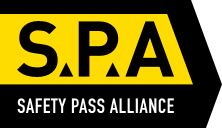Safety technology can revolutionise the workplace but there are pitfalls to watch out for.
These are exciting times to be working in safety. Technology to keep people healthy and safe at work has changed little in decades, but the Digital Revolution, powered by the internet of things (IoT), will herald unparalleled opportunities for OSH and enable real-time measurement and insight in ways previously unimaginable. But do we truly understand the issues that this technology could raise, and have we considered how to introduce them in ways that engage workers and provide a clear benefit to them?
IoT sensors supported by artificial intelligence (AI) will transform safety products such as personal protective equipment (PPE), workwear and alarms into “connected assets” with in-built sensors. These sensors can monitor everything from safety alarms, weather and site traffic to the location and wellbeing of workers. The power of this technology is realised when assets are connected to protect people in real time and data is created, enabling more precise measurement and deeper learning. Six ways that IoT technologies could improve OSH are shown below.
Organisations already use global positioning system (GPS) signals to locate their staff and business travellers at any time. IoT technology will take this concept to a new level, enabling work on complex sites with busy traffic to be better controlled.
Around 50 people are killed and more than 5,000 are hurt each year in accidents involving moving vehicles and objects. Traffic interaction on hectic worksites is currently controlled using independent and often manual measures, such as segregation, signage, banksmen, speed limits and PPE. IoT sensors within smart PPE, vehicles and assets will enable these safety controls to function as one interconnected system. Geofencing can also be used to create virtual geographic boundaries, alerting the sensors in wearables when the individual enters the zone. This could transform worker situational awareness by warning them in real time if they enter a danger zone or the path of a moving vehicle, and automatically isolating equipment if hazardous conditions arise.
The technology also raises implications we need to consider. Every practitioner knows the importance of consulting employees so we will have to engage with the workforce, answer their concerns and provide options. At a more profound level, we need to consider how this technology shapes employees’ perceptions of control and autonomy, which are known factors affecting stress and mental health. Thought will also have to be given to workers’ concerns about how the data could be misused.
Augmented reality within head-mounted displays enables workers to overlay contextually relevant information, such as plans, into their immediate line of sight. Workers can also communicate directly with others using in-built cameras to share images. Many of the headsets incorporate voice-control systems, called hearables, enabling workers to call up instructions using speech recognition and complete checklists using verbal commands. Employers will need to consider the risk of eavesdropping and how permissions for voice recording are obtained.
Wearables measure a range of body dimensions and provide unparalleled ways to monitor an individual’s physical status and warn when conditions become dangerous. Measuring a worker’s actual exposure in real time to chemicals, noise and heat can be augmented with body monitoring to assess the impacts. The capabilities of today’s wearable devices have improved significantly, and the latest ones can measure oxygen saturation rates and monitor for atrial fibrillation (a condition that causes an irregular and often abnormally fast heart rate). Improvements in the range of data gathered and the capability of analytics could transform our understanding of health and wellbeing.
Wearables open new ways to manage exposure levels. Such insight can be used to change the type of work, potentially altering exposure periods and shift patterns or making physical changes to the work set-up to improve safety. This type of information will establish a real-time feedback loop helping us to learn from “work as done”. It’s not solely about improving occupational exposures, however; wearables are already improving employee’s participation and engagement with health and wellness programmes.
Privacy considerations
Given how much personal health data wearables will collect, organisations will need to consider their legal obligations on the holding of medical records as well as privacy legislation such as the EU general data protection regulation (GDPR) and, in the US, the Health Insurance Portability and Accountability Act of 1996 (see “Considerations for employers”, right).
They will also need to consider how they use, retain and potentially share the wealth of data they obtain, satisfying themselves that their third-party providers have measures to securely manage the data they access or gather. Other considerations centre on how data will be retained, decommissioned and deleted, in compliance with the six principles of GDPR and, given some of this data could be construed as occupational health records, with the obligation for long-term retention. Employers will need to build trust early with their workforce through dialogue and transparency about what they intend to do with the data gathered.
Organisations also need to be clear about when a wearable is desirable or mandatory. For wearables that are used as a formal monitoring technique of a workplace hazard, it is likely that their use would be deemed mandatory and that might trigger formal consultative processes and possible inclusion in employment contracts.
Just and fair investigations
Other considerations that employers should plan for are how the data will be used post-incident and how it fits with the “just and fair” approach to investigations. Armed with IoT data from wearables, hearables and tracking devices, investigators will have their own “black box” of information and may know more about an incident than the victim can recall. Such information could transform how investigations are conducted, and OSH managers would be wise to plan for this.
The technology has significant potential to improve how we manage OSH risks, but this can be realised only if we recognise that workers are key to making it a success. Ultimately, they have the most to gain from the introduction of IoT safety devices because they are the ones who are being injured, partly as a result of the limitations of current technology.
Workers also have the greatest knowledge of how work is conducted and will be able to identify where this technology could have its maximum impact. Early engagement and transparency on data management will be essential to build trust and support for safety technology.
IOSH Magazine



















